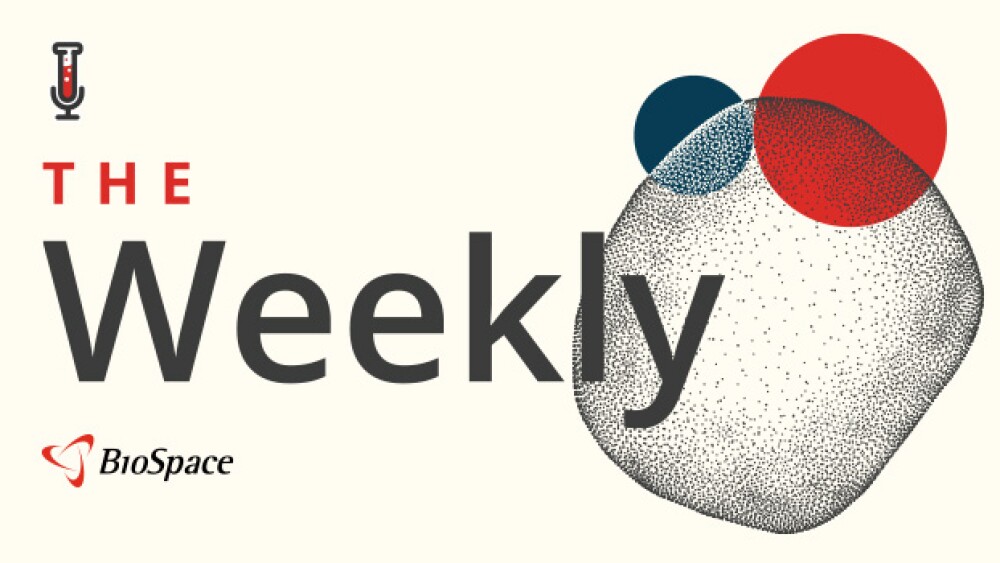VANCOUVER and SAN DIEGO, CA, April 11 /PRNewswire-FirstCall/ - MIGENIX Inc. , a clinical-stage developer of drugs for infectious diseases, has received new top-line results confirming the previously announced clinical results (November 6, 2006) indicating evidence of clinical benefit, safety and tolerability in a Phase II study using the oral alpha-glucosidase inhibitor, celgosivir (MX-3253), in combination with pegylated interferon and ribavirin.
In addition to confirming the overall conclusions of the original study analysis, retesting resulted in a larger percentage of patients achieving an Early Virologic Response(x) ("EVR") rate with celgosivir plus peginterferon alfa-2b and ribavirin (the "triple combination") as compared to treatment with peginterferon alfa-2b and ribavirin alone (the "control treatment") in patients with chronic hepatitis C virus genotype 1 infections who were characterized as non-responders to prior therapy with optimized pegylated interferon plus ribavirin, achieving:
- 42% (5/12) EVR with the celgosivir triple combination arm compared to 10% (1/10) EVR in the control treatment arm. This compares with 33% (4/12) EVR (triple combination) vs 10% (1/10) (control treatment) in the original study results. (x) EVR = 2 log(10) or greater HCV viral load reduction at 12 weeks. - 1.63 log(10) (triple combination) mean HCV viral load reduction ("VLR") compared to a 0.92 log(10) VLR (control treatment). This compares with a 1.2 log(10) VLR (triple combination) vs a 0.4 log(10) VLR (control treatment) in the original study results. - a more rapid onset of treatment effect as measured by VLR within the first 2 weeks of therapy in the triple combination as compared to the control treatment.
These new top-line results complete the retesting announced February 6, 2007 as a result of Schering-Plough Corporation ("Schering") having informed MIGENIX that approximately 50% of the original viral load samples from the study, which Schering tested under a Material Transfer and License Option Agreement between the companies, required retesting.
AnnKatrin Petersen, M.D., Vice President, Clinical Development of MIGENIX stated, "the increase in EVR to 42% after retesting (33% previously) for the celgosivir triple combination group in these very difficult to treat patients, along with the clear evidence of rapid reduction in viral load give us increased confidence in the potential of celgosivir to contribute in the treatment of HCV patients."
Jim DeMesa, M.D., President and CEO of MIGENIX added, "This confirmation of our previously announced results allows us to now focus on providing a data package to Schering-Plough over the next few weeks for their limited period of exclusive review under our License Option Agreement. The better EVR results seen upon retesting, especially in these very difficult-to-treat non-responder patients, reinforces our optimism in celgosivir's potential to improve treatment outcomes for these HCV patients with few therapeutic options."
EASL PresentationThe results from this study will be presented on April 15, 2007 at the 42nd Annual Meeting of the European Association for the Study of the Liver (EASL) being held in Barcelona, Spain April 11-15, 2007. The presentation entitled: "Phase II Proof of Concept Study of Celgosivir in Combination with Peginterferon Alfa-2b and Ribavirin in Chronic Hepatitis C Genotype-1 Non-responder Patients" will be made in the General Session 4 on Sunday, April 15th from 1:00pm-1:15pm in Hall F of the CCIB Conference Center. Dr. Kelly Kaita, the Director of the Viral Hepatitis Investigative Unit (VHIU) at the Health Sciences Centre, University of Manitoba and a lead investigator in the MIGENIX Phase II study will make the presentation on behalf of MIGENIX.
Additional Information About the Clinical StudyThe Phase II non-responder combination study was designed to determine, over 12 weeks of treatment, the efficacy, safety, and tolerability of celgosivir in combination with peginterferon alfa-2b, with or without ribavirin, in HCV-positive (genotype 1) patients who were non-responders or partial responders to prior therapy with optimized pegylated interferon and ribavirin.
A total of 57 patients were enrolled into this Phase II study (36 were non-responders and 21 were partial responders). Patients were randomized into three treatment arms: (i) celgosivir (400mg once daily) plus peginterferon alfa-2b plus ribavirin ("triple combination"); (ii) celgosivir (400mg once daily) plus peginterferon alfa-2b ("double combination"); and (iii) celgosivir placebo plus peginterferon alfa-2b plus ribavirin ("control treatment"). Of the 36 non-responders, 30 patients completed the 12-weeks of treatment: 12 in the triple combination arm, 8 in the double combination arm, and 10 in the control treatment arm. Beyond the triple combination and control treatment results reported above the following results were also consistent with the originally reported results: (a) the double combination did not show a meaningful difference in mean viral load reduction and EVR when compared to the control treatment in non-responder patients; and (b) in the partial responder patient population, there were insufficient patients (n=3) in the triple combination arm for any conclusions to be drawn and the double combination showed less effect than the control treatment.
Celgosivir combination therapy was well tolerated and resulted in no significant adverse events. As expected from previous experience, the most frequent side effects related to celgosivir were gastrointestinal in nature and were generally mild. Other frequently observed side effects were fatigue and flu-like symptoms - which are side effects usually associated with pegylated interferon and ribavirin. Only 7 of the 57 patients entering the study dropped out prior to week 12.
Material Transfer and License Option AgreementUnder the terms of the Agreement, Schering supplied PEGETRON(TM) (peginterferon alfa-2b powder for solution plus ribavirin 200 mg capsules) as well as certain technical and laboratory support and other services for MIGENIX's celgosivir Phase II combination study in chronic HCV patients and a related extension protocol. In addition, the Agreement granted Schering limited periods of exclusivity for data review of clinical trial results and for the negotiation of a license agreement. With the new top-line results, we will be working to provide a data package to Schering over the next few weeks, after which Schering's limited period of exclusivity for data review under the Agreement will commence. No license terms have been negotiated with Schering to date.
About Celgosivir (MX-3253)Celgosivir is an alpha-glucosidase I inhibitor and is currently the only anti-HCV drug in clinical development that acts on host-directed glycosylation. In preclinical studies, celgosivir has shown excellent in vitro synergy with various interferons in the clinic or in development including Pegasys, PEG-Intron, Infergen, Alferon and IFN-omega (with or without ribavirin) and other drugs in development for the treatment of HCV (e.g. polymerase inhibitors) and therefore has the potential to be included as part of many combination therapeutic approaches to improve efficacy in anti-HCV therapy.
About HCVHCV, the most common chronic blood-borne infection in the United States, causes inflammation of the liver and may progress to more serious complications such as cirrhosis of the liver, liver cancer and death. Approximately 2.7 million people in the United States are chronically infected with HCV, and the Centers for Disease Control and Prevention (CDC) estimates that by the year 2010, the number of deaths attributed annually to HCV could surpass that due to HIV/AIDS in the US. Worldwide, the World Health Organization estimates that 170 million individuals have chronic HCV infection, with 3 to 4 million new infections each year.
Therapy for HCV currently employs a drug combination approach, which is anticipated to continue in the future. The current standard of care for treatment-naive chronic hepatitis C is pegylated interferon combined with ribavirin, which fails to provide a satisfactory outcome for approximately 50% of patients infected with HCV genotype 1 (the most prevalent genotype in North America). In addition, these drugs can cause significant side effects that limit tolerance to therapy, or a frequent lack of sustained treatment response.
About MIGENIXMIGENIX is committed to advancing therapy, improving health, and enriching life by developing and commercializing drugs primarily in the area of infectious diseases. The Company's clinical programs include drug candidates for the treatment of chronic hepatitis C infections (Phase II and preclinical), the prevention of catheter-related infections (Phase III) and the treatment of dermatological diseases (Phase II). MIGENIX is headquartered in Vancouver, British Columbia, Canada with US operations in San Diego, California. Additional information can be found at www.migenix.com.
"Signed" James M. DeMesa, M.D. President & CEO FORWARD-LOOKING STATEMENTS
This news release contains forward-looking statements within the meaning of the United States Private Securities Litigation Reform Act of 1995, and forward looking information within the meaning of applicable securities laws in Canada, (collectively referred to as "forward-looking statements"). Statements, other than statements of historical fact, are forward-looking statements and include, without limitation, statements regarding our strategy, future operations, timing and completion of clinical trials, prospects, plans and objectives of management. The words "anticipates", "believes", "budgets", "could", "estimates", "expects", "forecasts", "intends", "may", "might", "plans", "projects", "schedule", "should", "will", "would" and similar expressions are often intended to identify forward-looking statements, which include underlying assumptions, although not all forward-looking statements contain these identifying words. By their nature, forward-looking statements involve numerous assumptions, known and unknown risks and uncertainties, both general and specific, that contribute to the possibility that the predictions, forecasts, projections and other things contemplated by the forward-looking statements will not occur.
Although our management believes that the expectations represented by such forward-looking statements are reasonable, there is significant risk that the forward-looking statements may not be achieved, and the underlying assumptions thereto will not prove to be accurate. Forward-looking statements in this news release include, but are not limited to, statements concerning: our expectations regarding the time required to complete and provide a data package of the celgosivir Phase II study results to Schering; our expectations for the celgosivir Phase II study results being presented on April 15, 2007 at the EASL conference; and celgosivir having the potential to be included as part of many combination therapeutic approaches to improve efficacy in anti-HCV therapy.
With respect to the forward-looking statements contained in this news release, we have made numerous assumptions regarding, among other things, our ability to successfully complete the celgosivir Phase II data package for Schering within our expected timelines, EASL accepting the new celgosivir Phase II results, the competitiveness of the celgosivir study results to date and future results supporting its potential in the treatment of HCV.
Actual results or events could differ materially from the plans, intentions and expectations expressed or implied in any forward-looking statements, including the underlying assumptions thereto, as a result of numerous risks, uncertainties and other factors including: uncertainties related to early stage of technology and product development; uncertainties as to the requirement that a drug be found to be safe and effective after extensive clinical trials and the possibility that the results of such trials, if completed, will not establish the safety or efficacy of our products; dependence on corporate collaborations; uncertainties as to future expense levels and the possibility of unanticipated costs or expenses or cost overruns; the possibility that opportunities will arise that require more cash than presently anticipated and other uncertainties related to predictions of future cash requirements; and other risks and uncertainties which may not be described herein. Certain of these factors and other factors are described in detail in the Company's Final Prospectus dated November 29, 2006, Annual Information Form and Annual Report on Form 20-F for the year ended April 30, 2006 and other filings with the Canadian securities regulatory authorities and the U.S. Securities & Exchange Commission.
Forward-looking statements are based on our current expectations and MIGENIX assumes no obligations to update such information to reflect later events or developments.
The Toronto Stock Exchange has not reviewed and does not accept
responsibility for the adequacy or accuracy of this release.
CONTACT: Art Ayres, MIGENIX Inc., Tel: (604) 221-9666 Ext. 233, aayres@migenix.com; Dian Griesel, Ph.D., Investor Relations Group, Tel: (212) 825-3210, Theproteam@aol.com
MIGENIX Inc.CONTACT: Art Ayres, MIGENIX Inc., Tel: (604) 221-9666 Ext. 233,aayres@migenix.com; Dian Griesel, Ph.D., Investor Relations Group, Tel:(212) 825-3210, Theproteam@aol.com




